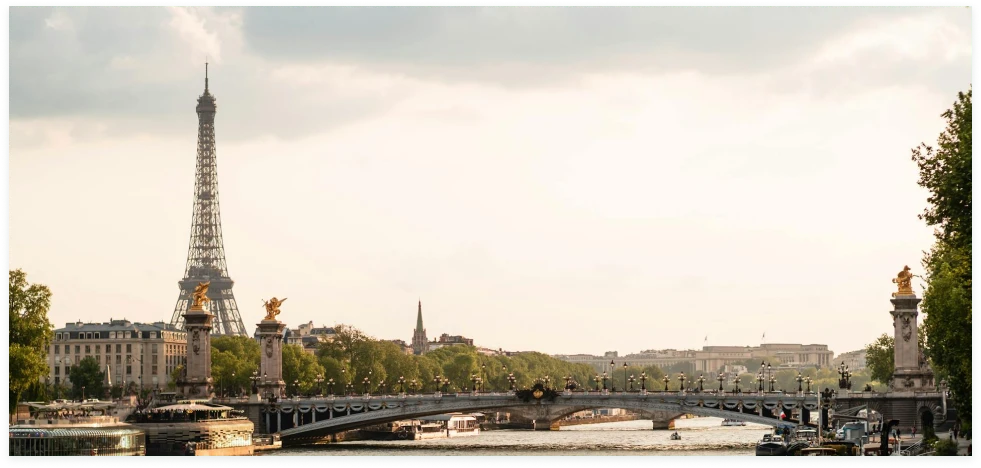
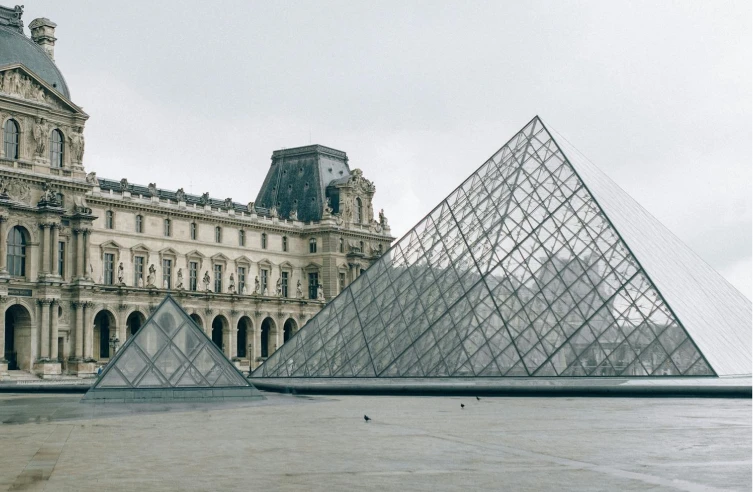
Experience the true spirit of Paris with a personal guide by your side. Go beyond the famous boulevards to uncover secret gardens, charming bookshops, and cozy bistros known only to locals. Let your guide share captivating stories as you wander through historic neighborhoods, admire world-class art, and savor authentic French flavors. Whether you dream of a sunset by the Seine or hidden gems in Le Marais, FindGuide connects you with the perfect companion for a one-of-a-kind Parisian adventure.
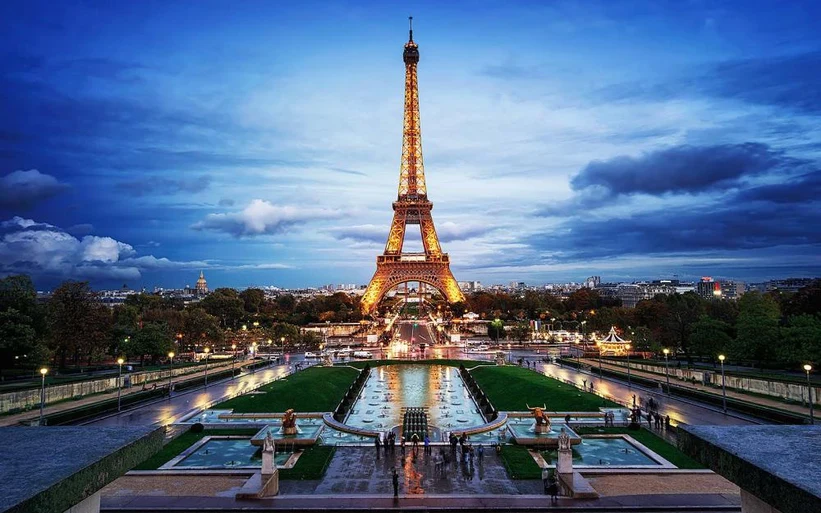
The Eiffel Tower is a national monument in Paris that was designed by the company of civil engineer Gustave Eiffel. When it was completed in 1889, it was the tallest man-made structure in the world. The Eiffel Tower was an icon of French engineering and innovation in the 19th century, as well as a testament to the dominant role that France held in the world at that time. The construction time of the Eiffel Tower is actually quite impressive. The first digging work started on January 28th 1887. On March 31st 1889, the Tower had been finished in record time. It only took a total of 2 years, 2 months and 5 days to construct! In recognition of the engineers, scientists and mathematicians who contributed to the construction of the tower, the names of these persons were engraved on the side of the tower. 72 names, to be exact.
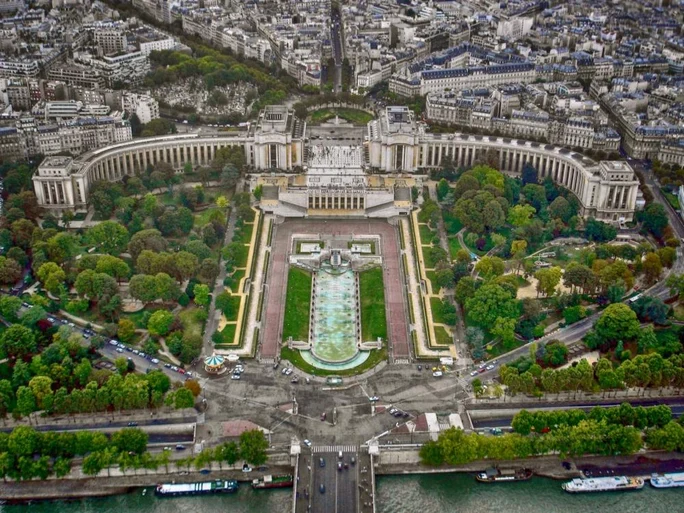
If there is one garden you really must visit when you go to the Eiffel Tower, it’s the Trocadéro gardens. Created for the Universal Exposition in 1937, this green space of nearly 10 hectares offers a stunning view of the Eiffel Tower dominating the capital . The centerpiece of the gardens is the famous Warsaw fountains. Its 20 water cannons line up perfectly with the Eiffel Tower directly across the Seine, creating a spectacular visual effect. On the side of the fountains closest to the Palais de Chaillot you’ll find two of the city’s most famous stone statues, L’homme and La Femme. One of the most iconic images of Paris is the view from behind L’homme or La Femme, with the statues looking out towards the Eiffel Tower.
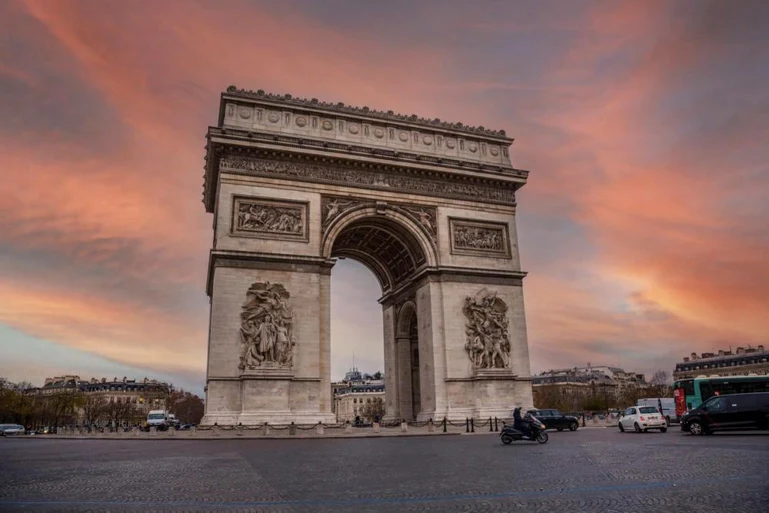
The Arc de Triomphe Paris, the most monumental of all triumphal arches, was built between 1806 and 1836 on the orders of Napoleon I to honor the victories of his Grande Armée. It stands at the center of the Place Charles de Gaulle, also known as the “Place de l’Étoile”, the western terminus of the avenue des Champs-Élysées. Even though there were many modifications from the original plans, the Arch still retains the essence of the original concept which was a powerful, unified symbol for France. Engraved on the inside and at the top of the arch are all of the names of the generals and wars fought. There are inscriptions in the ground underneath the vault of the arch which include the Tomb of the Unknown Soldier from World War I where the Memorial Flame burns and have made the Arc de Triomphe Paris a revered patriotic site.
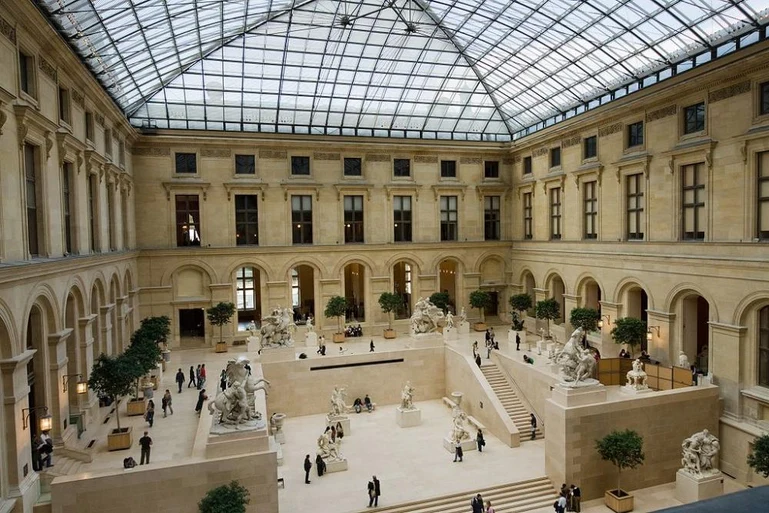
The Louvre Palace houses the world’s most-visited art museum, with a collection that spans work from ancient civilizations to the mid-19th century. The twelfth century fortress was extended and refurbished several times throughout the centuries. Before it opened as a museum, King Charles V and Philippe II chose this palace as their residence, decorating it with their ever growing art collections. When the Royal Family moved to Versailles, the impressive building that covers a total area of 160,000 square meters was transformed into one of the most important museums in the world. A glass pyramid, which is currently the museum’s principal entrance, was built in the palace’s main courtyard in 1989, piercing the monotony of the Louvre's exterior.
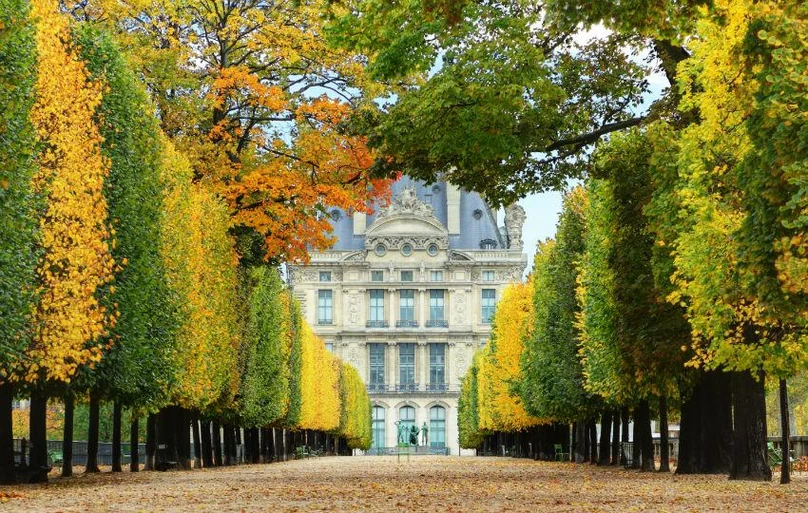
Located between the Louvre Museum and the Place de la Concorde, the Tuileries Garden was the first garden in Paris opened to the public. It is currently one of the most popular parks in Paris. The Tuileries Gardens take their name from the tile factories which previously stood on the site where Queen Catherine de Medici built the Palais des Tuileries in 1564. When the French court was moved to the Château de Versailles, the palace and its gardens were abandoned and weren’t restored until the eighteenth century, when the enclosure was transformed inspired by typical English gardens. In 1870, the Tuileries Palace was burnt down by the Paris Commune. However, the garden survived and is nowadays one of the prettiest greenspaces to visit in Paris.
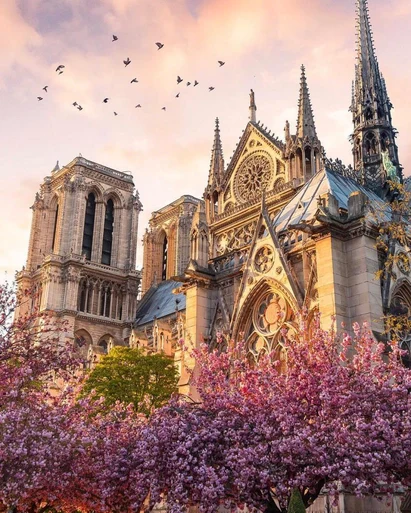
Notre Dame de Paris, a masterpiece of Gothic architecture, dates back to the 12th century. Designated a UNESCO World Heritage site with Paris Banks of the Seine, it is one of the most beloved monuments in the world, visited by more than 12 million people every year before the fire. Its construction spanned two hundred years, beginning in the middle of the 12th century, with modifications made in the 18th century and a major restoration project carried out in the 19th century. Many years visitors came to admire its stained glass and rose windows, the towers, the steeple and the gargoyles before on April 15, 2019, a devastating fire broke out under Notre Dame Cathedral’s roof. French President has declared a deadline of opening the cathedral to the public by 2024, with renovation and restoration efforts continuing in the years beyond.
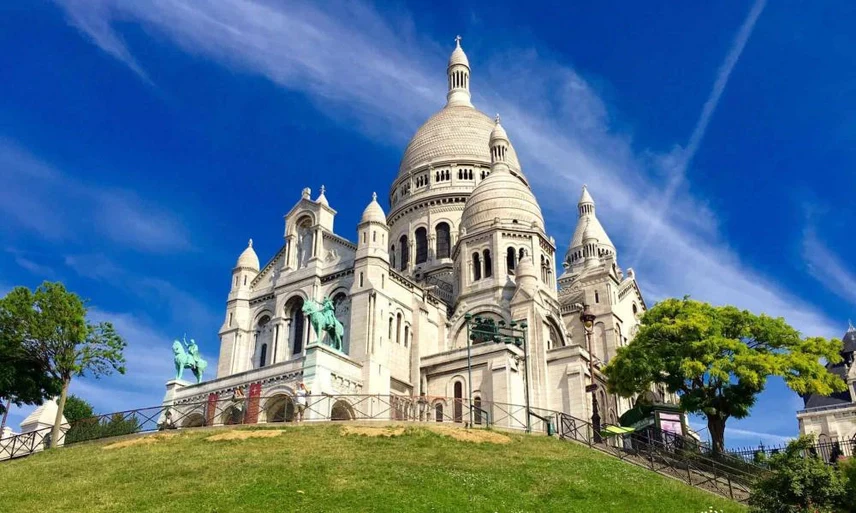
The Basilica of the Sacred Heart is a real architectural jewel, located at the top of the hill Montmartre, overlooking the city of Paris. Bright white, Sacré-Coeur Basilica shines all year round and amazes the one observing its complex Romano-Byzantine architecture. The building is remarkable for its Greek cross shape, majestic dome and apse, decorated with the largest mosaic in the world: 475 m². Sacré-Coeur also houses the biggest bell in France :“la Savoyarde” which measures 3 meters in diameter and weighs about 19 tons. It was offered to the Basilica by the four dioceses of Savoy, and was sent to the hill on October 16, 1895. Many tourist sites are at its feet and among these: The Place du Tertre, where many painters paint, the house of Dalida (French singer), the Pigalle place and at the bottom of the hill, the famous Moulin Rouge cabaret.
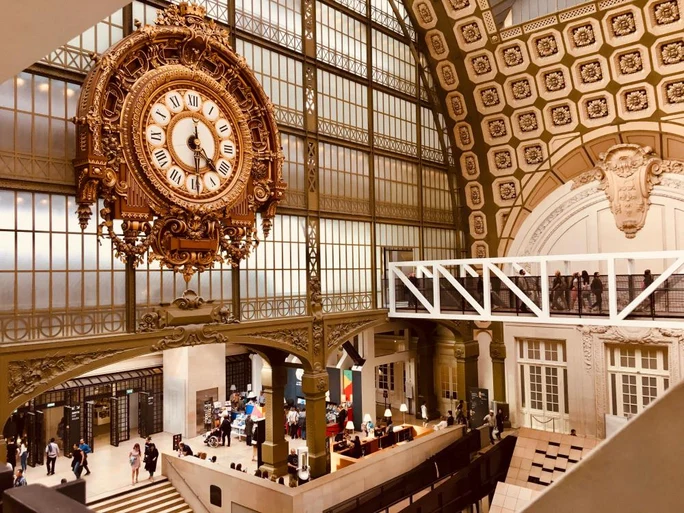
Built as a train station in the 19th-century's Belle Époque, Musée d'Orsay was transformed into a museum to house France's collection of 19th-century paintings when the Louvre museum literally ran out of space. Today, the collections of the musée d'Orsay are among the most famous in the world. The museum presents the artistic production of the period 1848-1914, a decisive period in art history which gave birth to the masterpieces of Impressionism. You will thus admire great artists such as: Manet, Monet, Van Gogh, Degas, Cézanne, Garnier, Courbet, Carpeaux, Nadar or Guimard. Its collections include works of architecture, decorative arts and photography in addition to traditional artistic fields (painting, sculpture, graphic arts). They thus draw a broad panorama of French and European art from 1848 to 1914. Promoting better visitor circulation and security, the museum renovated parts of its interior between 2009 and 2011, including the Impressionist galleries and the café. The Musée d’Orsay grew into one of the most-visited museums in Paris, typically receiving more than three million visitors annually.
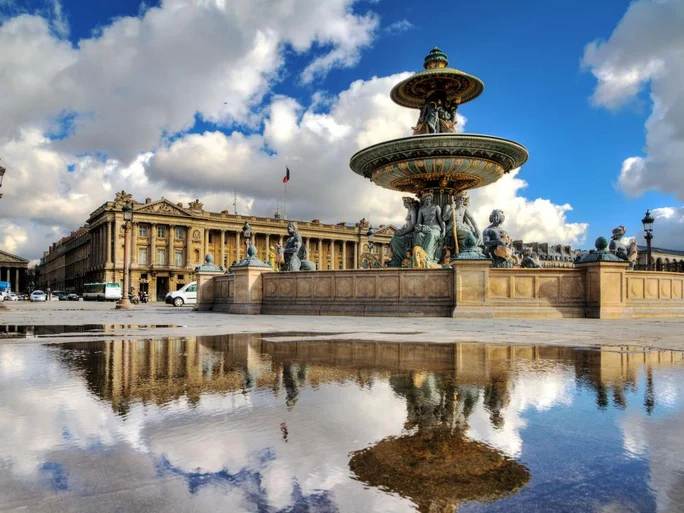
This square was designed between 1757 and 1779 and named Place Louis XV. In the center there was an equestrian statue of King Louis XV, made to celebrate his better health after having suffered a long illness. In 1792 the statue was torn down and melted and the square was renamed Place de la Révolution (Revolution square). During the French Revolution, this square was the chosen location for the public beheadings by guillotine of over 1,200 people. Some of the most famous figures guillotined were Queen Marie Antoinette, King Louis XVI or Maximilien Robespierre. When this bloodthirsty period ended in 1795, the square was named Place de la Concorde. Today it is famous for the Luxor Obelisk (a 3,300 year old Egyptian obelisk erected on the square in October 1836), and the two monumental fountains (Fontaine des Mers and Fontaine des Fleuves).The north side of the square is closed with the buildings of the French Naval Ministry and the Crillon Hotel, one of the oldest and most elegant hotels in Paris.
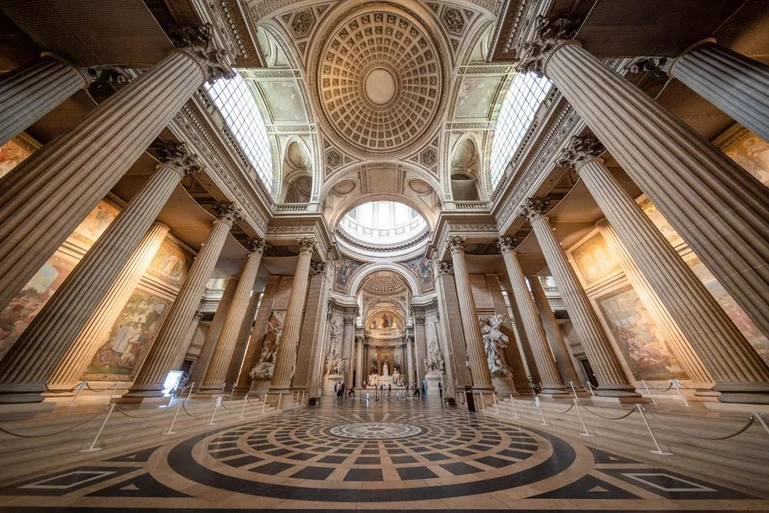
The Panthéon was the first major monument in Paris. It was built before the Arc de Triomphe and the Eiffel Tower, and was the first building that offered a panoramic view over France’s capital. The Panthéon was built between 1764 and 1790, firstly designed by Jacques Germain Soufflot and later by Jean Baptiste Rondelet. Architecturally, the building is an early example of Neoclassicism and the facade models after the Pantheon in Rome (its namesake). The Pantheon was originally built as a church and was dedicated to St. Genevieve. After many renovations and updates, it is now a place where people can go to worship. Now it is also known for the Crypt and as a burial ground. In the time of the Third Republic and coinciding with Victor Hugo’s funeral, the Panthéon’s necropolis was used to bury famous French citizens. Today, the Pantheon Crypt is the final resting place for many well known French citizens such as Voltaire, Rousseau, Victor Hugo, Marie Curie, Louis Braille, Jean Monnet and Alejandro Dumas.
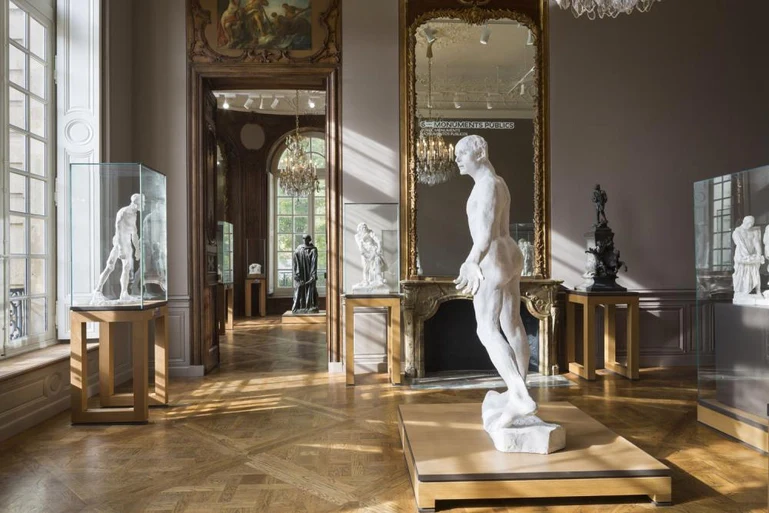
Created in 1916 by Auguste Rodin’s own initiative, the Musée Rodin (Rodin Museum) features the majority of the artist’s sculptures and work in the Hotel Biron, a charming rococo mansion and its gardens. Rodin donated his work and the artwork he had collected throughout his life so that they could be shown in the Hotel Biron, where he had lived since 1908. The artwork is made up of 6,500 sculptures made out of marble, bronze, terracotta, plaster and some 10,000 drawings including lithographs, watercolors and engravings. As well as Rodin’s work, the museum also contains the artwork collected by the sculptor, made up of 1,700 paintings, nearly 7,000 photographs and over 6,400 sculptures and ancient objects. The 3-hectare garden is one of the most popular parts of the museum. Here, visitors will find some of the artist’s most famous sculptures such as The Gates of Hell, Balzac, The Thinker and Bourgeois de Calais, all surrounded by a charming landscape.
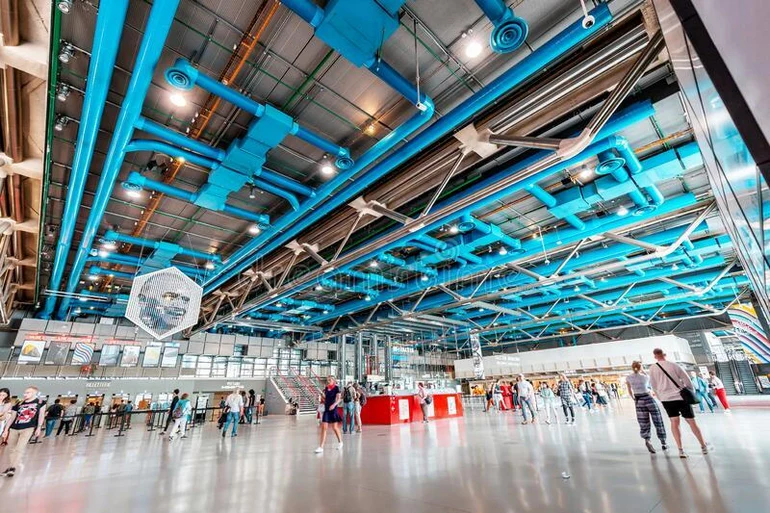
Home to Europe's largest collection of modern and contemporary art, Centre Pompidou has amazed and delighted visitors ever since it opened in 1977, not just for its outstanding art collection but also for its radical architectural statement. The Musée National d’Art Moderne, France’s national collection of art dating from 1905 onwards, is the main draw; a fraction of its 100,000 - plus pieces – including Fauvist, cubist, surrealist, pop art and contemporary works – is on display. It's located on the 4th and 5th floors. The permanent collection changes every two years, but the basic layout generally stays the same. The 5th floor showcases artists active between 1905 and 1970. You'll find works by Picasso, Matisse, Chagall, Kandinsky, Arbus, Warhol, Pollock and Rothko here. The 4th floor focuses on more contemporary creations, roughly from the 1990s onward, with monumental paintings, installation pieces, sculpture and video taking centre stage. The focus here is on contemporary art, architecture and design.
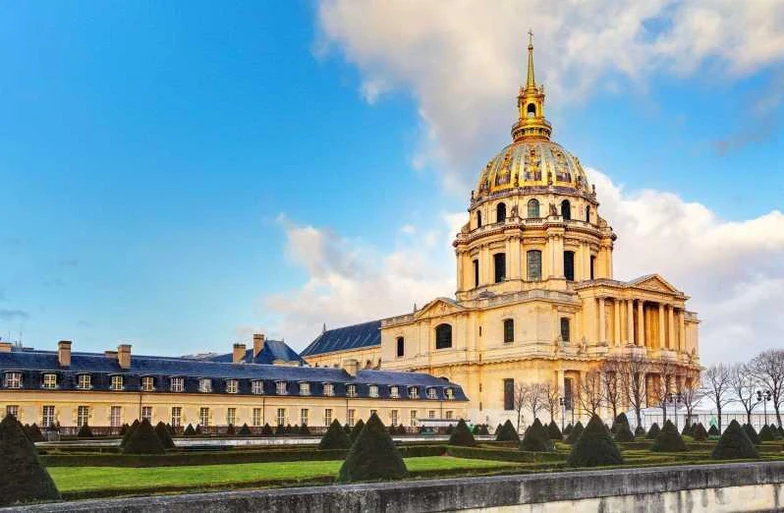
The Hotel National des Invalides is one of the most important monuments in Paris and it is the burial ground of one of the most iconic historical figures of France: Napoleon. The buildings here, built in the 17th century during the reign of Louis XIV, are popular Paris museums and national monuments, all of which relate to French military history. Within the Invalides complex is also a retirement home and a hospital for French Military veterans. Hospitals and homes for veterans are what the buildings were historically designed to do in the first place some three hundred and fifty years earlier. Some of the attractions of the Invalides are the military museum of the Army of France, the Musée de l’Armée; the Musée d’Histoire Contemporaine and the Musée des Plans-Reliefs. A part of the Musee de l'Armee is the Royal Church called the Eglise du Dome. Built between 1677 and 1706, the royal chapel later became a military pantheon, where the remains of Napoleon I rest.
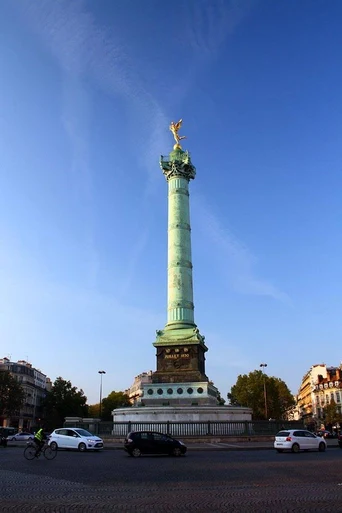
Once, a big fortress, the Bastille prison used to stand there. On July 14, 1789, 633 angry French citizens stormed the Bastille in Paris, capturing its munitions, releasing its seven prisoners, lynching the governor and demolishing the fortress. This was the dramatic start of the French Revolution. Unlike most beliefs, the Colonne de Juillet – now standing there – does not commemorate the French Revolution marked by the Storming of the Bastille but the one in 1830. Mounted on top of the column is a golden sculpture, the “Spirit of Freedom”, commonly known as the “Angel of the Bastille”. Another imposing figure standing on the square is the Bastille Opera, built by the architect Carlo Ott. It was unveiled for the 200th Anniversary of the French Revolution on July 14th 1989: The Bastille Day. The national Bastille Opera as well as the Palais Garnier, are major players on the international opera scene. Today, the term "Bastille" describes a column, a place, an opera house, an historic event, and an annual celebration.
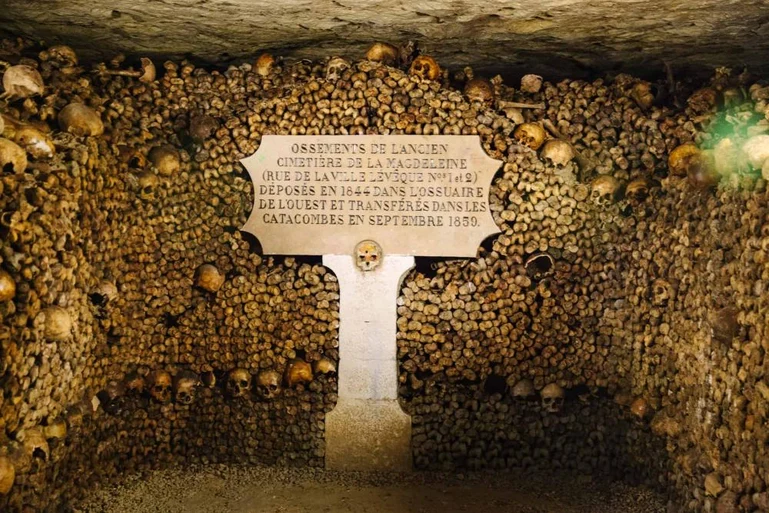
Below the streets of Paris lies a maze of limestone quarries that have long played a role in the city’s history. Most are situated in the southern part of the city, which was the chosen site for the Catacombes de Paris. The need for a subterranean ossuary in the late 18th century arose from a rather unpleasant problem: The cemeteries of central Paris were so full that the smell of rotting bodies had become unbearable to local residents. The macabre process of transporting the bones of six million late Parisians was done with respect to the dead. Most of the bones in the ossuary were already centuries old when they were moved. However, it was also used as a burial site during the French Revolution all the way up until 1860. The catacombs have been a site of fascination ever since they opened in the early 19th century and remain open today as one of the city’s most unique attractions.
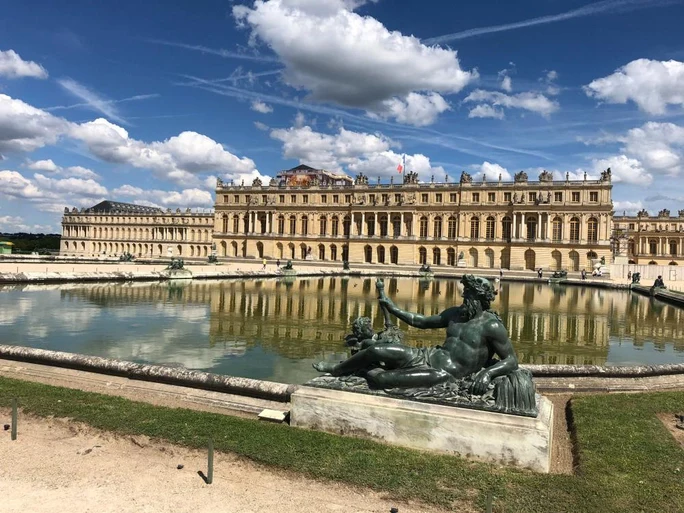
Listed as a UNESCO World Heritage Site since 1979, the Palace of Versailles constitutes one of the finest achievements of French art of the 17th century. The former hunting lodge of Louis XIII was transformed and extended by his son Louis XIV who installed here the Court and the government of France in 1682. Up until the French Revolution, a line of kings succeeded each other, each taking his turn to embellish the Palace. The ensemble traces the architectural style of the 17th and 18th centuries and comprises: the Royal Apartments, the Hall of Mirrors, the Chapel, the Royal Opera and the Museum of the History of France. The famous garden, designed by André Le Nôtre, is also the world’s biggest open air sculpture museum, home to 221 pieces. Predominantly depicting the great gods and heroes of Greco-Roman mythology, they stand here and there along lanes like the Green Carpet with its 12 statues, in the fountains, and in pools like the famous Dragon Pool that spouts water 27m up in the air.
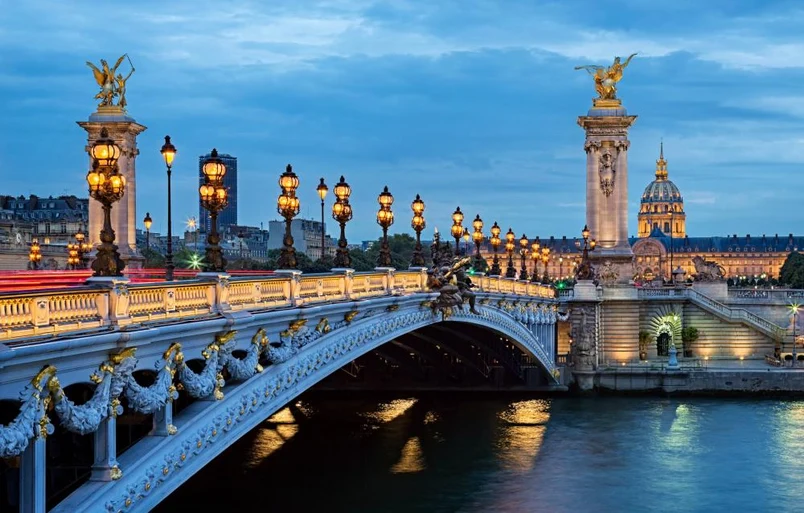
The Pont Alexandre III is one of the most legendary bridges in Paris because of its architecture, its proximity with the Invalides, the Grand Palais and the Petit Palais and its unobstructed view of the Eiffel Tower. Inaugurated on the occasion of the World Fair in 1900, the Pont Alexandre III has been designed as a symbol of the French-Russian alliance signed in 1891. It’s not for nothing if it’s called after the Russian Tsar Alexander III. In return, the “Troïtsky” Trinity bridge was built on the Neva in Saint-Petersburg. The first stone of the Pont Alexandre III was laid by Tsar Nicolas II and Empress Alexandra Fedorovna in 1896. An arched bridge is regarded as one of the most elegantly ornate bridges in Paris. The splendid decoration of the Pont Alexandre III is particularly valuable, and the bridge has been listed as an historic monument since 1975.
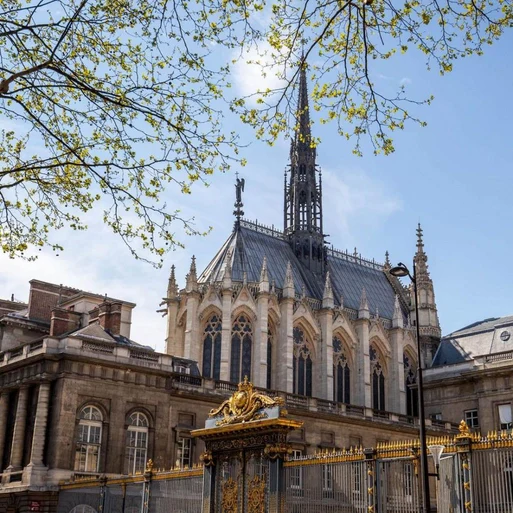
Situated on the Île de la Cité, a few steps from the Notre Dame Cathedral, the Sainte Chapelle or Holy Chapel is a real jewel in the heart of Paris. Entering it has the impression of entering a glass room. There are hardly any masonry walls here. The Holy Chapel concentrates one of the most beautiful and complete collections of stained glass windows from the 13th century. The walls of the chapel contain 12 tall, pointed windows filled with stained glass windows depicting scenes from the Holy Bible. The chapel was built in the 13th century at the behest of Louis IX with the purpose of keeping the relics of the Passion of Christ: a piece of the true cross, the crown of thorns, a nail of the Passion and other relics. They were bought in 1239 from the Emperor of Constantinople and were moved later to the Notre-Dame Cathedral.
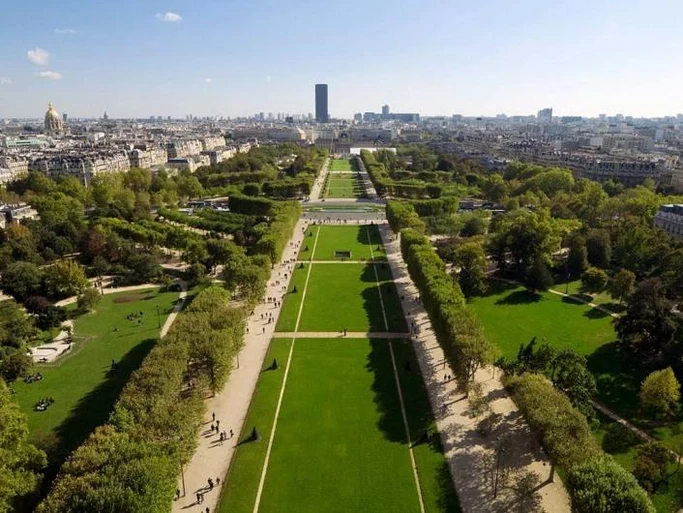
With an area of nearly 25 hectares, Champs de Mars (Field of Mars) is a peaceful green space located at the foot of the Eiffel Tower. On the opposite side is the impressive building of the École Militaire. Originally, the Champs de Mars was where the Parisians grew their vegetables and fruit. When the École Militaire (Military School) was built on the southeast side of the park, the land was used for military drills. The name Champs de Mars comes from that period, honoring Mars, the Roman war god. This open area has witnessed important events, such as different Revolutionary acts or the 1791 massacre. It has also housed the famous world fairs which were organized in Paris, such as the Exposition Universelle of 1867, 1878 and 1889. And it was a close observer of the Tour Eiffel, which would become the symbol of the city.
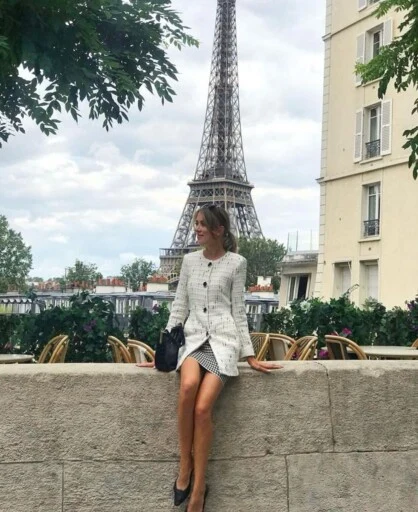 local
localLanguages:
Profile verified
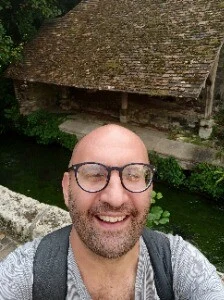 local
localLanguages:
Profile verified
 local
localLanguages:
Profile verified
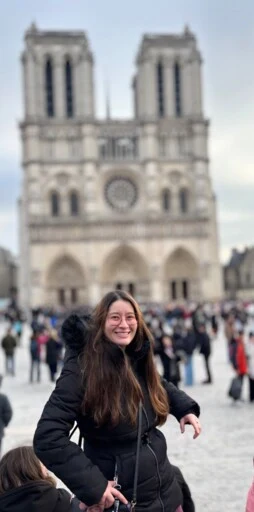 local
localLanguages:
Profile verified
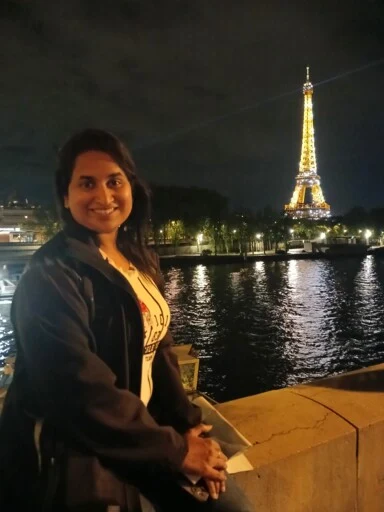 local
localLanguages:
Profile verified
 local
localLanguages:
Profile verified
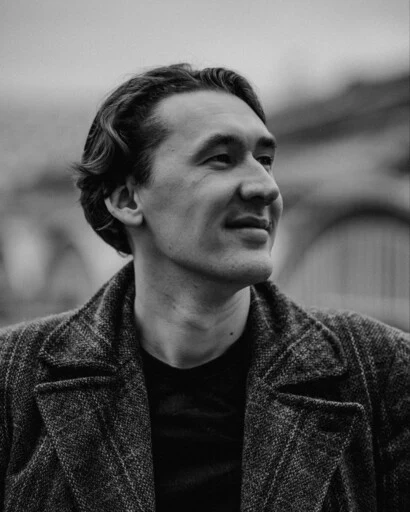 pro
proLanguages:
Profile verified
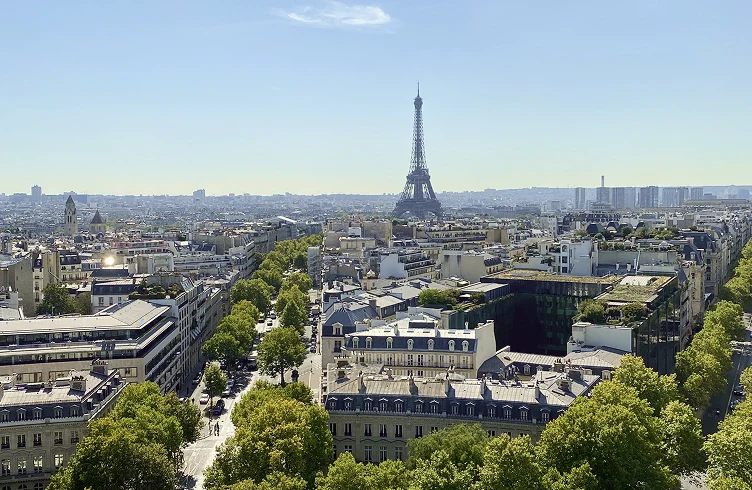

Paul
02.09.2025
People always ask me how long they should stay in Paris — and the truth is, it totally depends on what kind of trip you want. But here’s a little breakdown to help you decide.

Paul
11.09.2025
Montmartre, perched on a hill in northern Paris, is a neighborhood famous for its bohemian spirit and artistic heritage. With its winding streets, charming cafes, and stunning city views, Montmartre has long inspired artists, writers, and dreamers fr
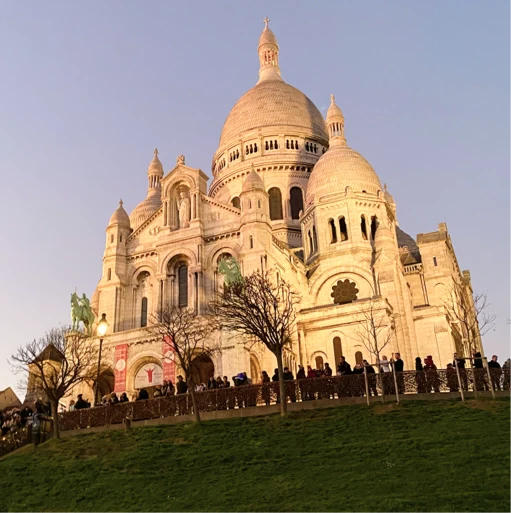
The heart of Montmartre is the iconic Sacré-Cœur Basilica, whose white domes can be seen from across the city. Climb the steps to the basilica for breathtaking panoramic views of Paris, or simply relax on the grassy slopes below. Nearby, Place du Tertre buzzes with local artists painting and selling their works, keeping the neighborhood’s creative energy alive.
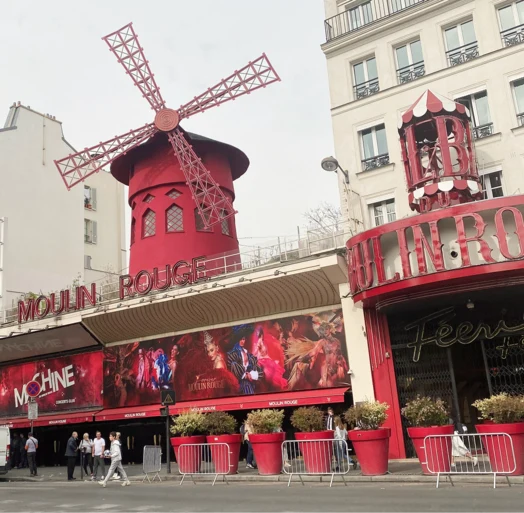
Montmartre is also home to the historic Moulin Rouge cabaret, famous for its dazzling shows and vibrant nightlife. Strolling through Montmartre’s narrow lanes, you’ll discover hidden gardens, old windmills, and the unique charm that makes this district a must-visit for anyone seeking the true artistic soul of Paris.

Paul
02.09.2025
Hello! I’m pretty sure you already heard of the most popular side of the city. But Paris also has a quieter voice. You’ll hear it in calm streets, small gardens, and places that feel more true than showy. This list is about that version of Paris.
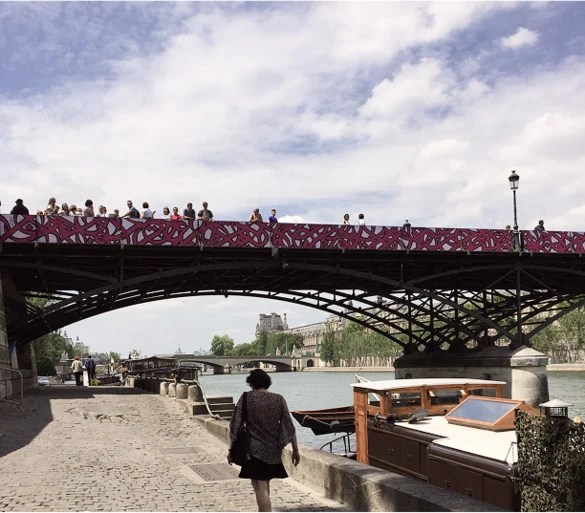
This walking bridge is full of charm. You’ll often see people sketching, reading, or simply enjoying the light over the Seine. It’s a favorite spot for picnics and quiet moments. Sometimes musicians come to play, and the whole bridge turns into a little stage floating above the river.
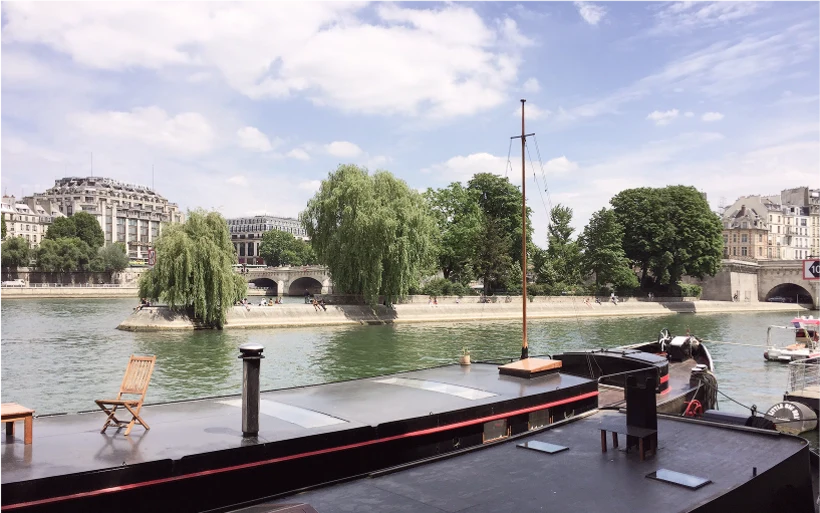
Walk the quiet island streets, visit Notre-Dame, and stop by the flower market. It’s where the city was born, and it still feels like a secret. The narrow paths and old buildings make it feel like time slows down. Find a bench by the water and just watch the boats go by.
Find a personal guide in just 1 minute and create your dream itinerary!
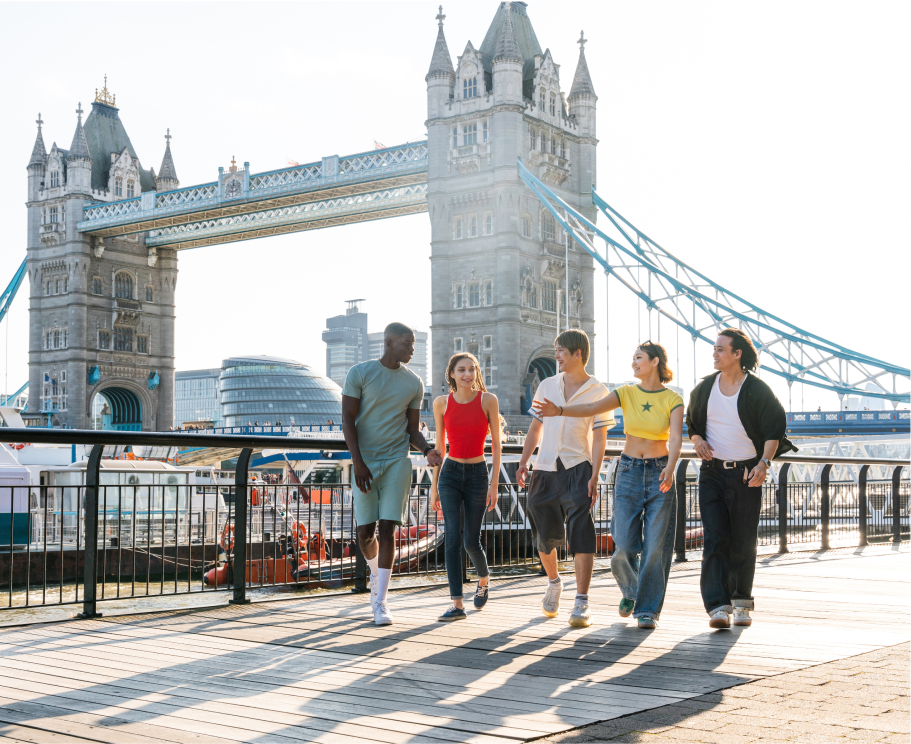
FindGuide is a platform for finding private and local guides around the world. You can choose a guide in advance who will show you the city from a local perspective, not just the standard tourist route.
Enter the city or country you're interested in into the search bar, choose a guide you like, and send them a request. All bookings are made directly on the platform.
We offer walking, food, historical, driving, private, and family tours in more than 100 destinations.
Yes, all guides go through moderation and verification. You can read reviews from other travelers, check the guide’s rating, and view their profile with photos and experience descriptions.
Tour prices vary depending on the destination, duration, and format. You see the cost upfront — no hidden fees.
Yes, the app is completely free for tourists. You can place your tour requests for local guides and access expert travel content totally free of charge.

